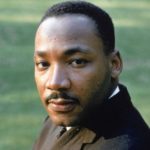When most people think of the Civil Rights Movement in America, they think of Martin Luther King, Jr. delivering his “I Have a Dream” speech on the steps of the Lincoln Memorial in 1963 and receiving the Nobel Peace Prize the following year. But “the Movement” achieved its greatest results — the 1964 Civil Rights Act and the 1965 Voting Rights Act — due to the competing strategies and agendas of diverse individuals. Even black Americans, the primary beneficiaries of this landmark legislation, did not agree on the tactics that should be used to secure the equal protection of their rights. This unit presents the views of several important black leaders who shaped the debate over how to achieve freedom and equality in a nation that had long denied a portion of the American citizenry the full protection of their rights.
I Have a Dream: Celebrating the Vision of Martin Luther King, Jr.

EDSITEment feature highlighting resources, activities, and lesson plans to help teachers, students, parents, and caregivers understand the impact Dr. King had — and continues to have — upon our country and the global efforts towards peace and civil rights.
On the third Monday of January, Americans celebrate the life and achievement of one of our most respected citizens — Martin Luther King, Jr. Dr. King was a leading force in the drive for civil rights in the United States, and he showed through words and actions that non-violent, persistent activism can achieve tremendous results by appealing to the moral conscience of Americans.